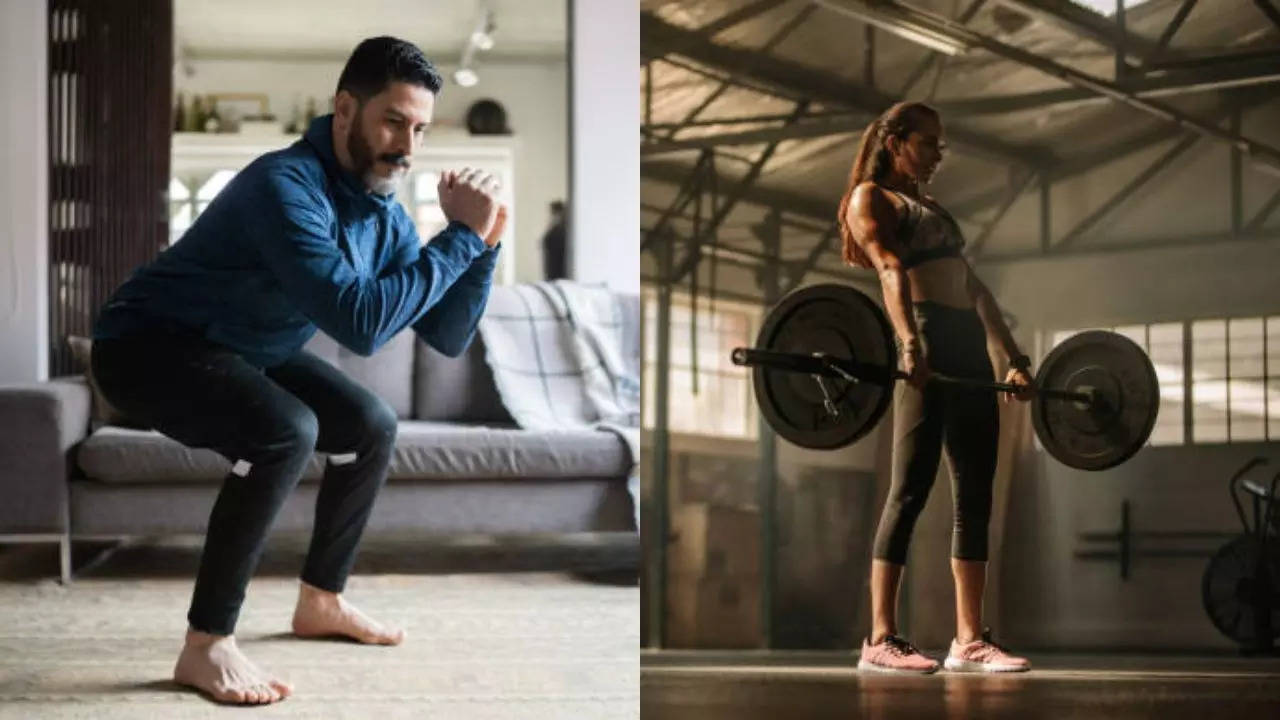Fitness
Squats Vs Deadlift: Which Is A Better Exercise For Strength Training? Expert Weighs In

Squats and deadlifts both target different muscle groups. Squats primarily engage the quadriceps, glutes, and core, enhancing lower body strength. Meanwhile, deadlifts focus on the hamstrings, back, and overall posterior chain. We got in touch with a health expert who shares which is a “better” exercise. Read on to know more.
Squats Vs Deadlift: Which Is A Better Exercise For Strength Training? (Image Credits: iStock)
When it comes to strength training, two exercises often stand out for their effectiveness in building muscle and improving overall fitness: the squat and the deadlift. Both exercises engage multiple muscle groups and result in significant benefits, but which one is better for strength training? We got in touch with Dr Akhilesh Yadav, Associate Director – Orthopaedics & Joint Replacement, Max Super Speciality Hospital, Vaishali who shares specifics of each exercise to determine their advantages and how they might fit into your workout regimen.
Squats For Strength Training
Muscle Engagement: The squat primarily targets the quadriceps, hamstrings, glutes, and calves. It also engages the core and lower back muscles to maintain balance and stability.
1. Lower Body Strength: Squats are unparalleled in developing lower body strength. They are particularly effective in building the quads and glutes.
2. Functional Fitness: Squatting mimics everyday movements like sitting and standing, making it excellent for functional strength and mobility.
3. Hormonal Response: Performing squats can lead to a significant hormonal response, including the release of testosterone and growth hormone, which are vital for muscle growth and recovery.
“Proper form is crucial in squatting to prevent injuries. Key points include keeping the back straight, knees aligned with the toes, and lowering the hips below the knee level,” Dr Akhilesh Yadav said.
Deadlift For Strength Training
Muscle Engagement: The deadlift works a broader range of muscles compared to the squat. It primarily targets the hamstrings, glutes, lower back, and core, but also engages the upper back, traps, and forearms.
1. Total Body Strength: Deadlifts are excellent for developing overall body strength as they engage multiple muscle groups.
2. Posterior Chain Development: They are particularly effective for strengthening the posterior chain, which includes the hamstrings, glutes, and lower back. This is crucial for athletic performance and injury prevention.
3. Grip Strength: Holding heavy weights in a deadlift significantly improves grip strength, which is beneficial for other lifts and everyday tasks.
“Correct form is essential to avoid injury. Important aspects include keeping the back neutral, lifting with the legs, and ensuring the barbell stays close to the body,” Dr Akhilesh Yadav said.
Squat vs. Deadlift: Which is Better?
– Lower Body Focus: Squats are superior for isolating and strengthening the lower body muscles, particularly the quads.
– Total Body Engagement: Deadlifts provide a more comprehensive workout for the entire body, making them ideal for overall strength development.
– Squats enhance functional movements and are particularly beneficial for activities that involve sitting and standing motions.
– Deadlifts are more effective for lifting and carrying objects, improving functional strength for a variety of physical tasks.
Injury Risk and Considerations:
– Squats: Improper form or overloading can lead to knee and lower back injuries.
– Deadlifts: Poor technique, especially with heavy weights, can result in significant lower back injuries.
“Both squats and deadlifts are fundamental exercises in strength training, each offering unique benefits. The choice between the two depends on fitness goals, physical condition, and training experience of the person. For lower body strength and functional fitness, squats are highly effective. For total body strength and posterior chain development, deadlifts are invaluable.
Incorporating both exercises into a balanced training program can yield the best results, leveraging the strengths of each movement,” Dr Akhilesh Yadav said.







:max_bytes(150000):strip_icc()/roundup-writereditor-loved-deals-tout-f5de51f85de145b2b1eb99cdb7b6cb84.jpg)


